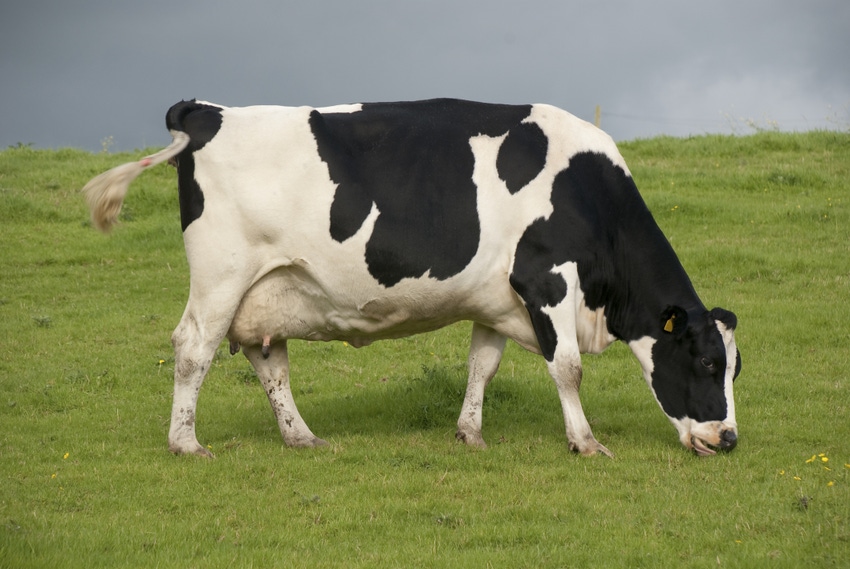Partnership collaborating to research and develop genomic evaluations for several new traits.
August 1, 2017

A new milestone in dairy genetics was achieved on July 10, when the 2 millionth individual animal genotype was recorded in the U.S. dairy database, according to the Council on Dairy Cattle Breeding (CDCB).
Use of an animal’s genotype — or genetic makeup — to predict future performance started in 2008, when the first U.S. Holstein sires were genotyped. Since 2008, the U.S. genotype database has grown tremendously and is the largest in the world, including genotypes for 278,984 males and 1,662,922 females from the five largest dairy breeds, as of July 10.
In 2016 alone, nearly a half-million genotypes were submitted to CDCB.
This milestone was achieved through a collaborative effort that includes dairy producers, genotyping labs, nominating organizations, international partners, CDCB and the Animal Genomics & Improvement Laboratory (AGIL). CDCB and AGIL work closely together to ensure that cutting-edge research is used to produce quality genetic evaluations for dairy producers and CDCB’s many customers.
As the foundation for genetic progress for more than 100 years, this partnership between the federal government, the dairy industry and producers has built a dairy information and genetic system regarded as the gold standard worldwide.
“In the past 10 years, genotypes and genomic evaluations have revolutionized dairy cattle breeding in the U.S. and worldwide. Swift adoption by dairy producers and genetic companies has resulted in tremendous gains in genetic improvement,” CDCB chief executive officer João Dürr stated. This computes the genetic evaluation for individual animals upon receipt of their genotypes and in combination with available information on performance and ancestry.
Implementation of genotyping and genomic selection has produced a large increase in genetic trend. One way to measure that trend is through the average net merit of bulls being marketed. Since 2011, the average annual net merit gain for Holstein bulls that entered artificial insemination is $80 — nearly double that of the previous six years ($47). Genetic gain has been achieved through shortened generation interval (age of parents when offspring are born) and increased selection accuracy (reliability).
Impact on dairy herds worldwide
Since 2009, dairy producers around the globe have been able to use high-ranking U.S. genomic sires — service sires whose genetic evaluations are based on genotypes before they have observed performance information from milking daughters.
“The ability for dairy farmers to genotype their females has been key in the genomic revolution,” Dürr said. “Now, producers can significantly influence genetic progress through more advanced selection of the heifers and cows in their herds.”
Many dairy producers genotype all of their heifers in order to make informed decisions as they apply various breeding and management strategies that can significantly affect herd inventory and profitability. Genotyping has also provided benefits in parentage identification and recordkeeping.
Research, new trait opportunities
The ability to predict animal breeding values at an earlier age and without phenotypic (or observed) data also creates new opportunities for genetic evaluations.
“Genotype innovations allow for incredible expansion of research and development of new traits that can continue to improve the health and productivity of dairy cattle,” said John B. Cole, acting research leader at AGIL, a part of the U.S. Department of Agriculture's Agricultural Research Service. “Further research and ongoing improvements will continue to increase the accuracy and comprehensiveness of genomic evaluations."
AGIL and CDCB have been collaborating to research and develop evaluations for several new traits, including gestation length, resistance to health conditions and feed efficiency. CDCB will launch the new gestation length evaluation in August, and six new health evaluations will be introduced in December.
Through genotyping, dramatic gains in genetic improvement can be realized, animals’ potential can be determined earlier and more accurately and new, economically important traits will be available for genetic selection.
CDCB, based in Bowie, Md., provides premier dairy genetic information services through industry collaboration centered around a mission to help optimize cow health and productivity in herds worldwide. CDCB drives continuous improvement and maintains the integrity of the world’s largest animal database, building on a quality foundation with more than eight decades of recorded U.S. dairy animal performance.
AGIL, located in Beltsville, Md., discovers and develops improved methods for the genetic and genomic evaluation of economically important traits of dairy animals and small ruminants and conducts fundamental genomics-based research aimed at improving their health and productive efficiency.
You May Also Like

.png?width=300&auto=webp&quality=80&disable=upscale)

